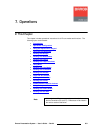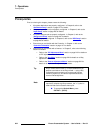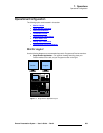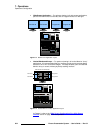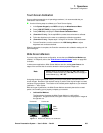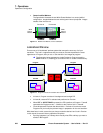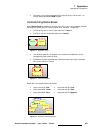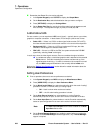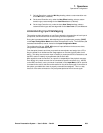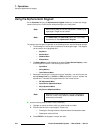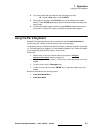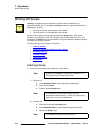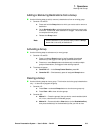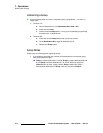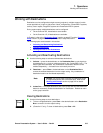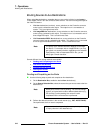
Encore Presentation System • User’s Guide • Rev 04 309
7. Operations
Operational Configuration
7. On both Controllers, under the Mix Key heading, select a custom transition rate
for the
Mix button (if desired).
8. On the small Controller only, under the User Effect heading, select a custom
transition type, rate and edge for the
User Effect button (if desired).
9. On the large Controller only, under the three User Trans headings, select a
custom transition type, rate and edge width for the
User Trans 1, 2, and 3 buttons.
råÇÉêëí~åÇáåÖ=fåéìí=cáäÉ=j~ééáåÖ
This section provides information on how Encore stores the characteristics of each input in
a unique file, and how those files are used during Controller operations.
During the input setup procedure, after adjusting each input parameter, pressing
{SAVE}
on the
Input Configuration Menu saves those characteristics in a file. The filenames (and
associated destinations) can be viewed on the
Input Configuration Menu.
The configuration file (e.g.,
IFILE_003) stores all input definitions for that source alone,
along with the associated destination.
From that point forward, each time you press that source button and assign it to a PIP or
Key, the stored file is recalled and the image appears on Preview (typically after a brief
delay). The delay occurs as each input is instantly re-scaled per the file’s instructions, and
the M/E’s scaler is instantly re-programmed with the file’s data.
With regards to router connections, an input file is independent of the physical connector.
Even though only certain sources can be connected to specific connectors (e.g., HD/SDI
on the BNC connector), once a connector is selected (on the
Input Menu) and an input file
is created for the source, that file can be recalled on
any of the same type of connectors in
the system, provided that a router is properly connected and assigned. This in no way
forces all of the other connectors to only accept that particular kind of source signal.



